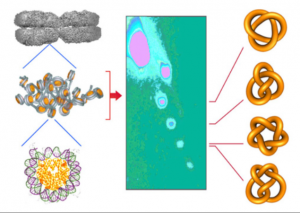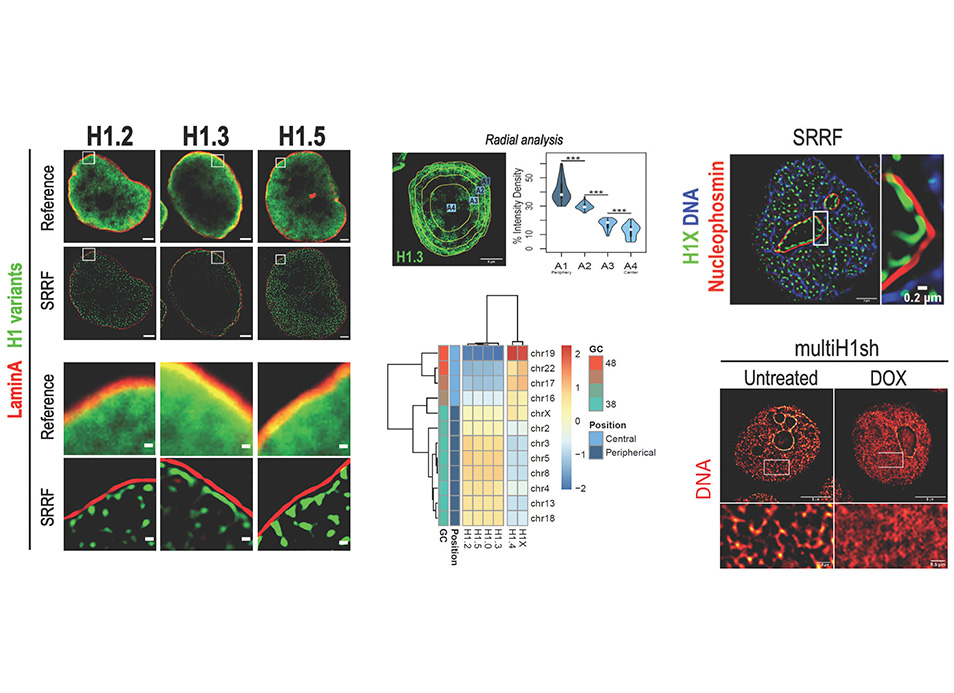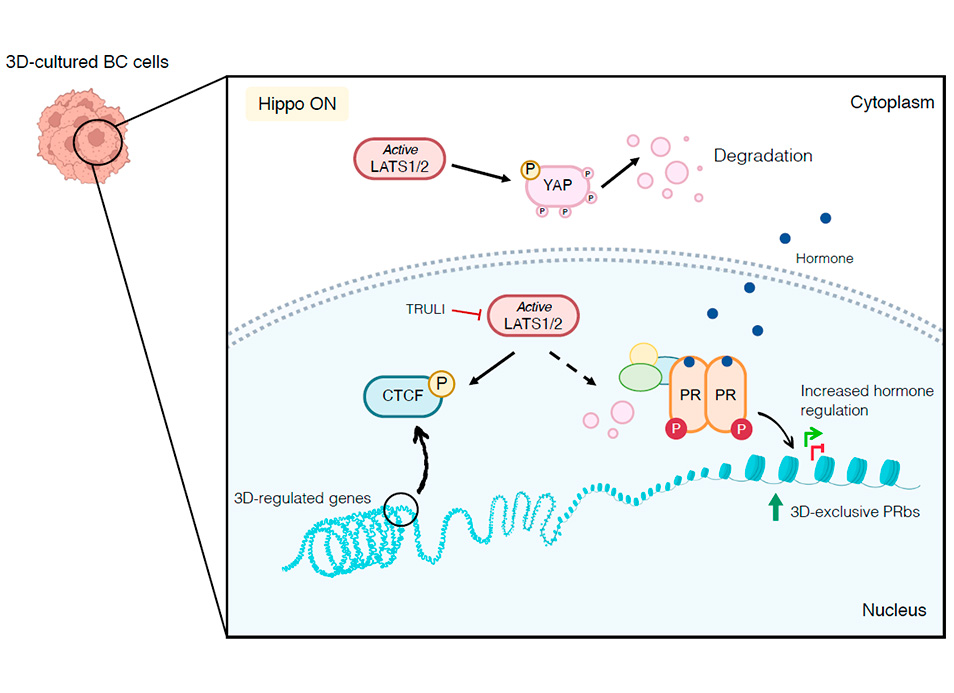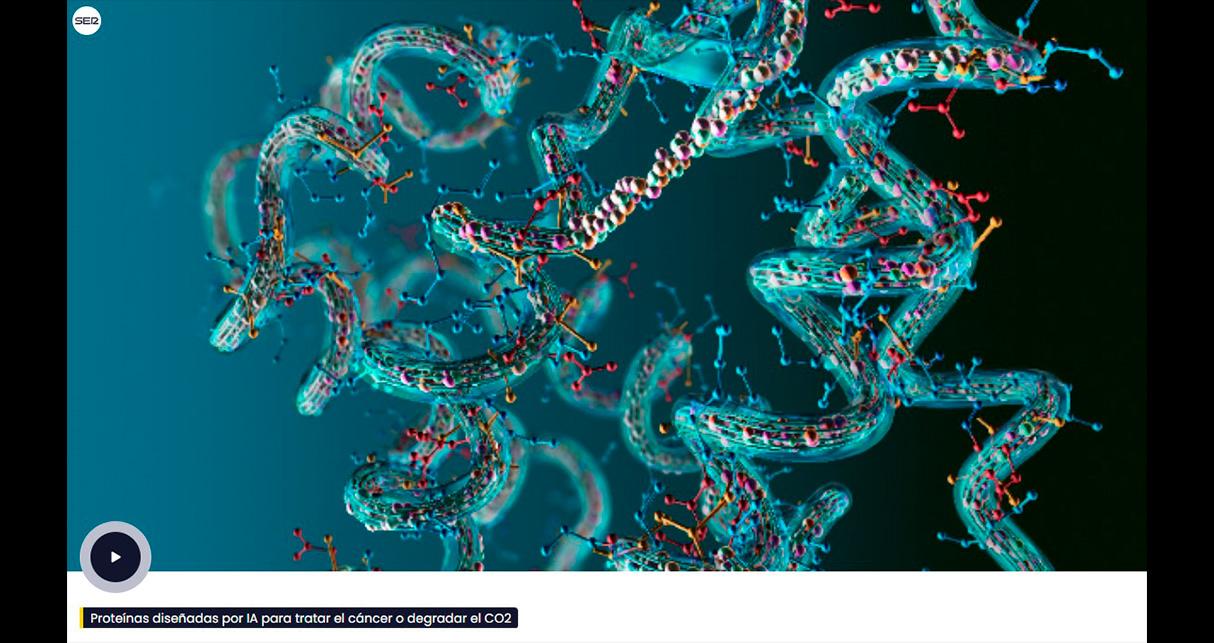New publication in eLife of the Jordan Lab in collaboration with the IBMB Imaging Platform showing that…
DNA knots occur in intracellular chromatin
Researchers of the IBMB have discovered that steady-state fractions of knotted DNA are common in living cells. The formation and resolution of intracellular DNA knots appears to be mediated by the ubiquitous topoisomerase II activity present throughout eukaryotic chromatin. Analysis of the abundancy and complexity of these DNA knots provides an unique non-invasive approach to infer biophysical and conformational properties of chromatin fibers in vivo.

The occurrence of DNA knots had never been documented in eukaryotic chromatin.
However, since intracellular DNA is narrowly packaged within chromatin fibers, it is likely to be entangled by the DNA strand passage activity of topoisomerase II. This study is the first report on the probability of DNA knot formation in eukaryotic chromatin (K P CHR ). The results demonstrate that trefoils and more complex knot species occur in yeast circular minichromosomes in vivo. These knots are not by-products of DNA replication but are produced by topoisomerase II and are transiently reduced during DNA transcription.
Intriguingly, K P CHR does not scale proportionally to the length of the nucleosomal fibers: K P CHR increases sharply to about 0.02 in the range length of 10 to 20 nucleosomes but tends to level off in longer fibers. The K P CHR values indicate that nucleosomal fibers are locally highly flexible in vivo, with an apparent persistence length shorter than the DNA linker length and effective diameter smaller than the thickness of DNA. The leveling of K P CHR values denotes a length-dependent change in the folding pattern of the nucleosomal fiber, consistent with chromatin having a fractal architecture. On this regard, the 10-nm nucleosomal fibers seems to fold into clusters of about 20 nucleosomes that keep the knotting probability of intracellular DNA within bearable levels. Deeper characterization of DNA knot species produced in vivo will lead to the disclosure of the trajectory of DNA during specific genome transactions and chromatin states.
This research has been performed by the "DNA Topology" group (Dr. Joaquim Roca) and has been published in Nucleic Acids Research.
DNA knots occur in intracellular chromatin. Antonio Valdés, Joana Segura, Sílvia Dyson, Belén Martínez-García, Joaquim Roca. Nucleic Acids Res. (2017). DOI:10.1093/nar/gkx1137.



